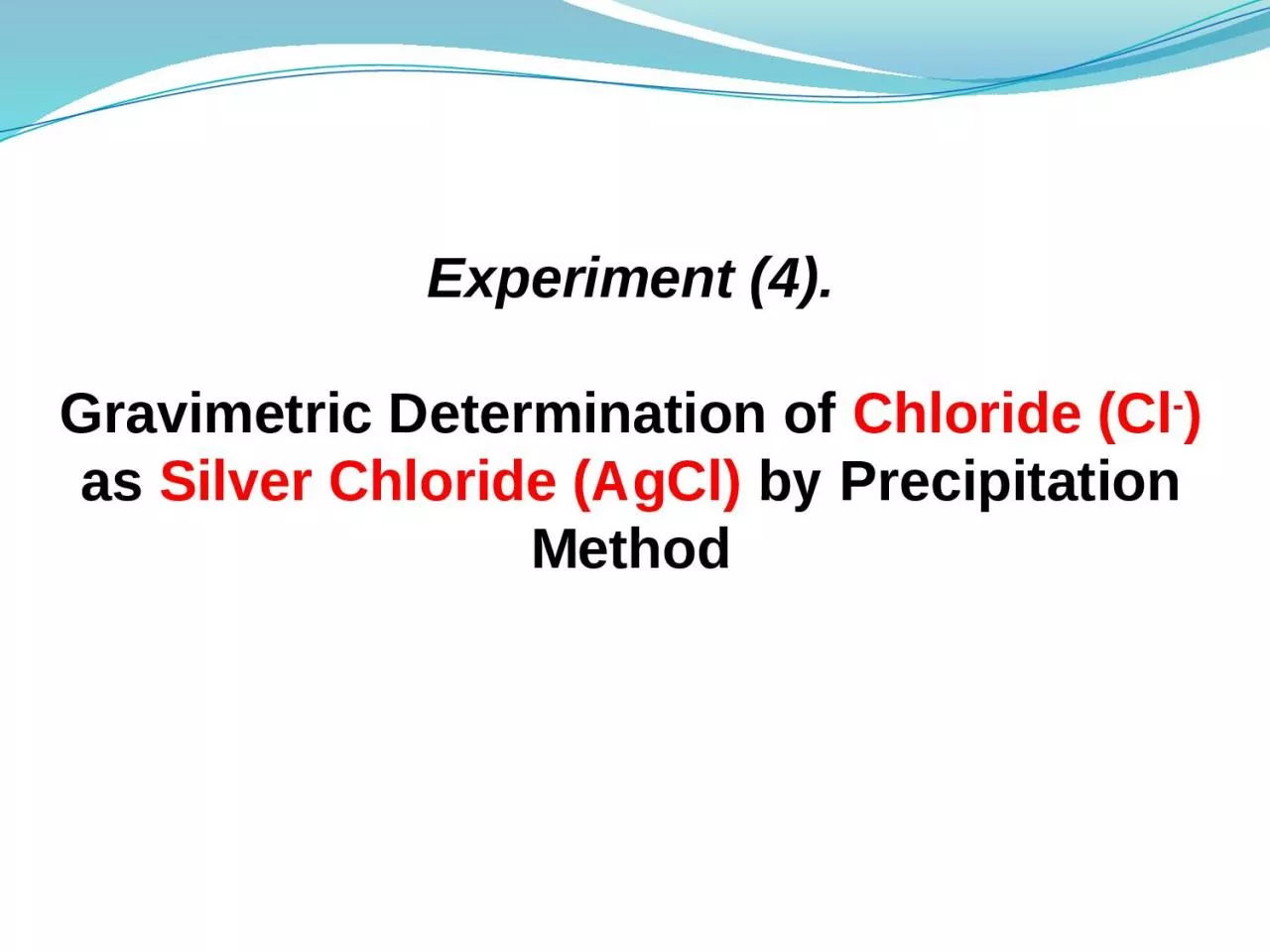

Chloride Cl as Silver Chloride AgCl by Precipitation Method The aqueous solution of the chloride is acidified with nitric acid and a slight excess of silver nitrate solution is added whereupon silver chloride is precipitated ID: 1043690
Download Presentation The PPT/PDF document "Experiment (4). Gravimetric Determinatio..." is the property of its rightful owner. Permission is granted to download and print the materials on this web site for personal, non-commercial use only, and to display it on your personal computer provided you do not modify the materials and that you retain all copyright notices contained in the materials. By downloading content from our website, you accept the terms of this agreement.
1. Experiment (4).Gravimetric Determination of Chloride (Cl-) as Silver Chloride (AgCl) by Precipitation Method
2. The aqueous solution of the chloride is acidified with nitric acid and a slight excess of silver nitrate solution is added, whereupon silver chloride is precipitated.NaCl + AgNO3 AgCl + NaNO3The precipitate, which is initially colloidal, is coagulated by heating the solution and stirring the suspension vigorously.
3. AgNO3 + NaCl NaNO3 + AgCl Precipitate
4.
5. Silver chloride (AgCl) has solubility in water of 1.4mg/L at 20°C, and 21.7 mg/L at 100 °C. The solubility is less in the presence of very dilute nitric acid (HNO3), and is very much less in the presence of moderate concentrations of silver nitrate (AgNO3).
6. Notes:1- The sample solution was acidified in order to prevent the precipitation of other silver salt such as phosphate and carbonate, or formation of insoluble AgOH in alkaline medium.
7. 2- The formed ppt. is sensitive to the light. 2AgCl(s) light 2Ag(s) + Cl2(aq) The results will be (-ve error) due to the removal of Cl- from the ppt. In the absence of excess silver nitrate (AgNO3). But causes (+ve error) in the presence of excess silver nitrate (AgNO3), because the chlorine (Cl2) changed back to ppt. (AgCl), which cause further precipitation of silver chloride according to this reaction: 2AgCl(s) light 2Ag(s) + Cl2(aq) 3Cl2(aq) + 3H2O + 5AgNO3 5AgCl(s) + HClO3 + 5HNO3
8. 3- The precipitant agent was added slowly with constant stirring, to prevent local high concentration of the ppt.4- 10% excess of the real volume of AgNO3 was added to decrease the solubility of silver chloride by common-ion effect.AgCl Ag+ + Cl-AgNO3 Ag+ + NO3- Common ion
9. 5- When a very slight excess than 10% of silver ion was added then the solubility of silver chloride increase due to formation of the soluble complex cations: AgCl(s) + Ag+(excess) Ag2Cl+(aq) Ag2Cl+ + Ag+(excess) Ag3Cl++(aq)
10. 6- The ppt. was washed with 0.01M HNO3 (dilute), not higher concentration because the solubility of AgCl is greater in the stronger HNO3.7- Solubility of AgCl is increased by increasing temperature therefore it is filtered at room temperature.8- Precipitant agent (AgNO3) is light sensitive, therefore it must be protect from the light.2AgNO3 light 2Ag(s) + 2NO2 + O2
11. Procedure:
12.
13.